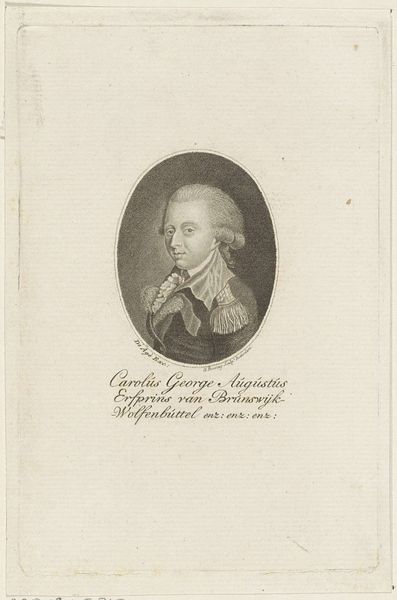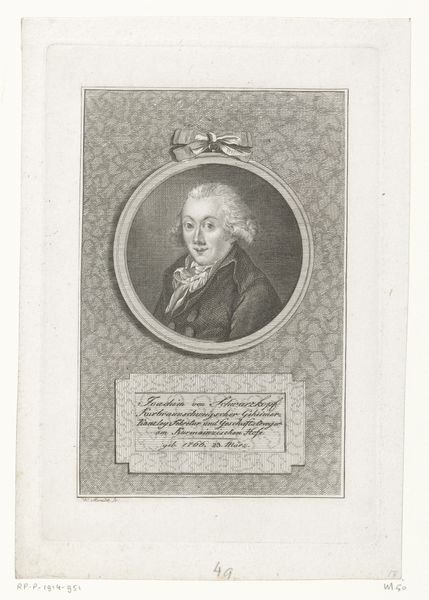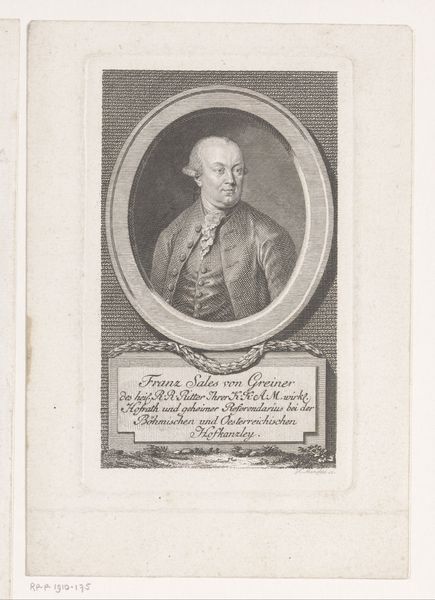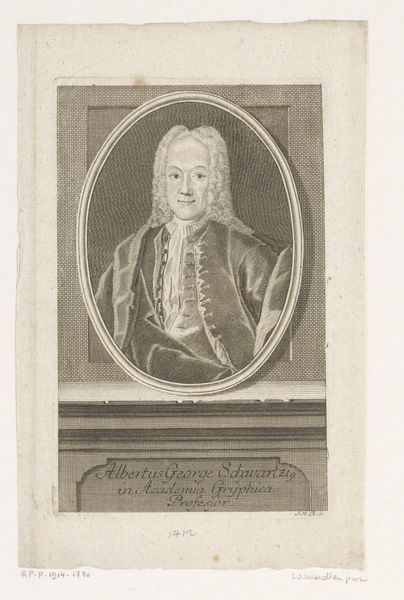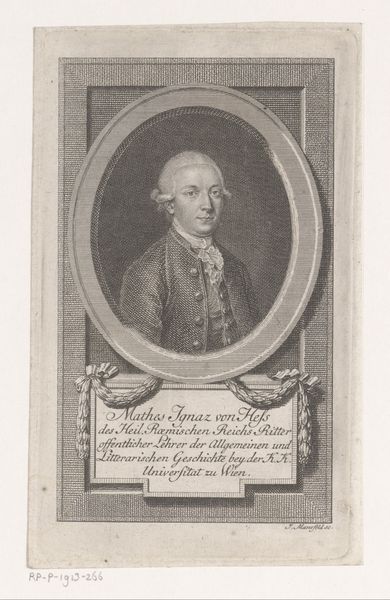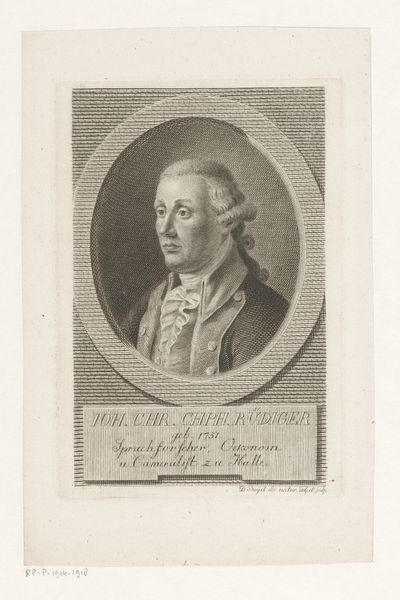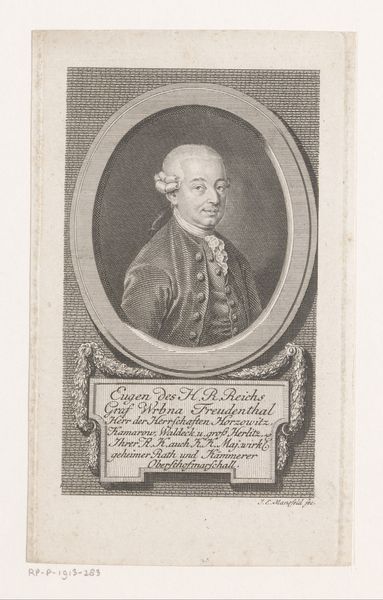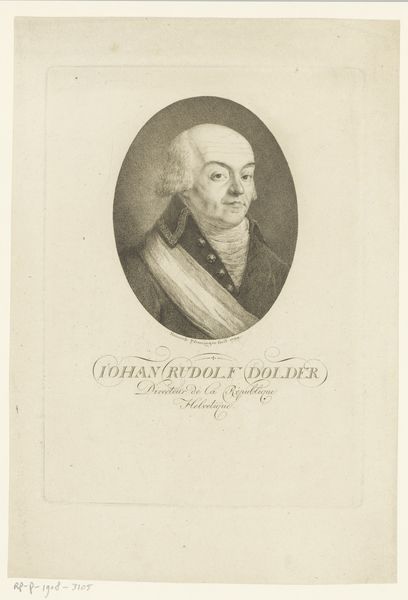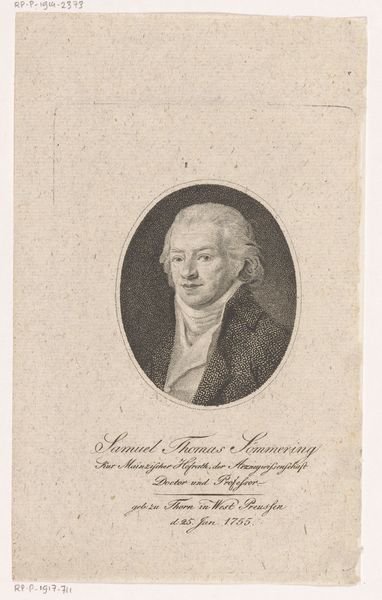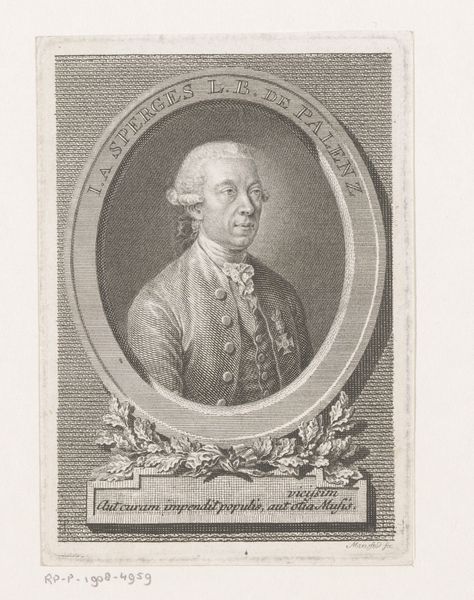
print, engraving
#
portrait
#
neoclacissism
# print
#
history-painting
#
engraving
Dimensions: height 168 mm, width 104 mm
Copyright: Rijks Museum: Open Domain
Curator: Before us, we have "Portret van Joachim Schwarzkopf," an engraving dating from 1805 to 1843 and held here at the Rijksmuseum. The artist is Johann Carl Bock. Editor: It's captivating. He looks like he’s seen a ghost—a sort of dignified fright etched on his face. Curator: Well, the neoclassical style, as seen here, aimed for rationality, but portraiture can still capture a certain vulnerability. This print is actually quite interesting when we consider the technique. Engraving is a painstaking process, requiring immense skill to carve those fine lines into a metal plate. Editor: Exactly! Look at the precision involved in capturing the details of his garments, the lace cravat, and the layering of fabric. But more than that, imagine the societal pressures bearing down, essentially branding the poor sitter's persona. Curator: It's true, the image served a social purpose; it offered a glimpse into the social status and identity of Herr Schwarzkopf. The material itself, the paper and ink, would have been carefully sourced. Also, think of how widely these prints were circulated! Editor: Making Schwarzkopf's image portable and accessible, right? It’s an interesting counterpoint to the idea of unique artworks created by celebrated “geniuses." These prints were replicable objects of design. I’m stuck thinking about all that human labour and raw materials tied into making an image that we now classify as “high art.” Curator: You've definitely given me food for thought! The blend of artistic skill and material production... it adds another layer to our understanding of the image, a certain truth if you will. Editor: Truth? Or just revealing the industrial framework which, frankly, romanticising artwork conveniently elides. Curator: I'm struck by the man's expression, how it transcends the calculated execution of the Neoclassical style. Editor: And I appreciate your sensitivity to that, yet it's important to not fetishize that so-called expressive element and erase all the invisible production, distribution networks, that contributed to art historical canon-building.
Comments
No comments
Be the first to comment and join the conversation on the ultimate creative platform.
